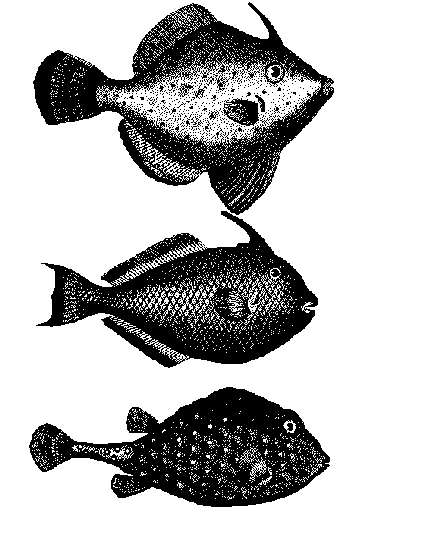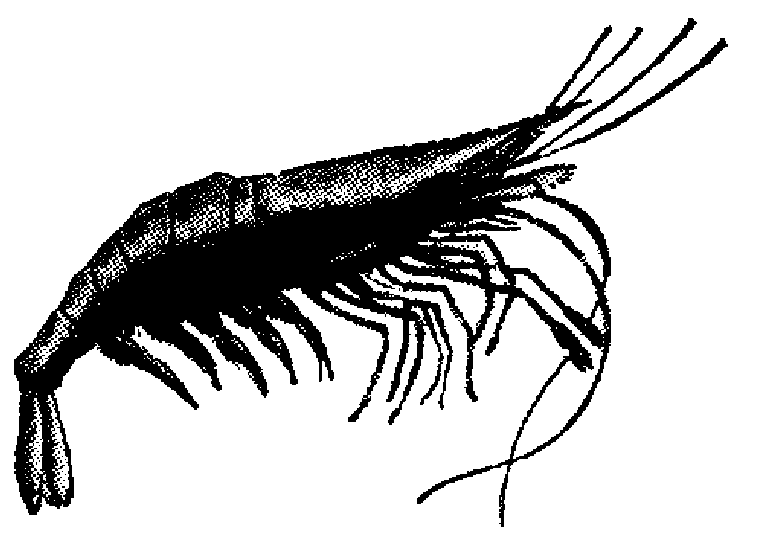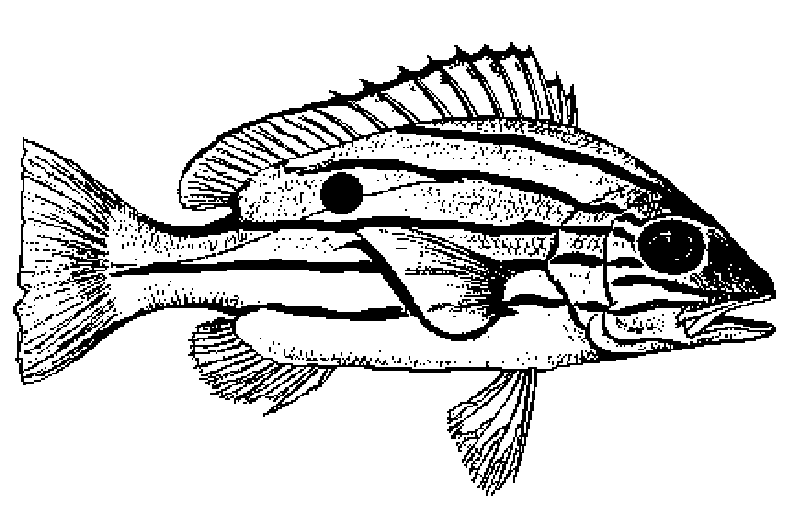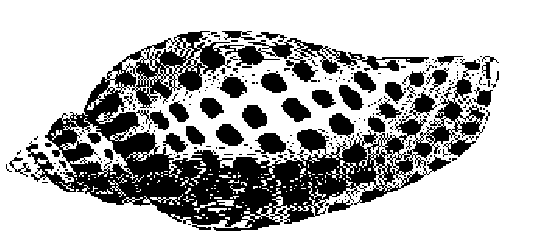
Dave Brooksby, from Southern Diving, reported a great deal of interest both in our tank and the Society. He received many favourable comments on the display. Whilst Phill and I were setting up the tank one of the Security guards recalled last years Show and the Port Jackson in a jar. She remembered the reason for the shark being in the container and was looking forward to this years display.
Philip Hall

Club members may be interested to know that divers at Port Noarlunga Reef have a small chance of sighting the Luderick ( Girella tricuspidata ), and should keep an eye out for this fish especially at high tide over the reef platform.
About 18 years ago, I saw 3 or 4 Luderick at this location, swimming strongly in a loose group, in white water at a very high tide with perhaps a metre of water depth over the platform, just north of the gap.
Having long heard of Luderick through eastern states fishing articles, I recognised this fish as clearly distinct from the closely related Zebra Fish (Girella zebra ), common at this location, in having much narrower, dark vertical bars across the body and without the yellowish fin colouration of the latter.
I was quite excited at the time, as the then solitary reference on S.A. Fish, "The Marine and Freshwater Fishes of S. A." (Scott, Glover & Southcott), listed the Luderick as being doubtfully recorded in S.A. and yet I was certain I had seen it, on this one occasion only amongst the numerous photographic dives at this particular dive location.
Of course I was unable to get a photograph! Nearly 20 years have passed and I've not seen another Luderick, but am now aware from "The Fishes of Australia's South Coast" (Gommon, Glover and Kuiter) and "Sea Fishes of Southern Australia" (Hutchins and Swainston), that the Luderick is definitely recorded in S.A. waters, albeit uncommonly. The former states that Luderick are "usually restricted to the eastern coasts between southern Queensland and northern Tasmania, occasionally found westward as far as central South Australia", while the latter states that the species is a "common inhabitant of NSW's coastal and estuarine reefs. Infrequently reaches as far west as Central S.A. (Adelaide)".
David Muirhead

3/6/97
At the July General Meeting a
written Code of Ethics was agreed upon. The initial document was
the result of much input by members. This was amended by the Committee
and a final revision was made at the meeting. We will trial it
for several months and then decide if amendments are needed. The
main point to be stressed is that every Member participating in
a MLSSA dive is subject to the conditions contained in the Code.
Questions on the actual operation of the Code may be directed
to any Committee Member. However, as the Code was published in
the July Newsletter, we expect that if any questions were to be
asked they would have been by now.
Philip Hall
Terry Sim from the SA Museum recently
explained the scientific name of the Leafy Seadragon, Phycodurus
eques, to me. His explanation went something like this:- "Phyco"
comes from "Phyko" which is (Latin?) for seaweed. "Urus"
comes from "oura" which is means tail. "Eques"
comes from either "equus' meaning horse or "equestris"
meaning horseman. So Phycodurus eques means something like
"a horse with a seaweed tail" which seems appropriate
for the Leafy Seadragon. Thanks again for this bit of information
Terry.
Steve Reynolds
Dragon Search Officer
Below we present the Scuba Divers
Federation of SA's views on current marine environmental issues
(specific areas of concern to sports divers).
There are many pressing problems impacting on SA marine eco-systems. The SDFSA consider the following to be the main issues currently affecting the marine environment :-
CREATION OF NEW MARINE HABITATS (ARTIFICIAL REEFS)
We believe that the creation of new artificial reefs will become increasingly important to SA over the coming years.
Artificial reefs will be able to provide new habitats for marine life in locations where existing habitats have been continually degraded.
Decommissioned vessels could be used as artificial reefs. These would help recolonise the gulfs and remove some of the pressure from our important historic shipwrecks.
Artificial reefs placed in appropriate areas can slow the degradation of our coastline by reducing the impact of wave action on beaches.
MARINE RESERVES
We would like to see more marine eco-systems declared as marine parks/aquatic reserves. Areas that we would like to see declared as such include:-
The waters surrounding Wardang Island.
Kingscote and Penneshaw, Kangaroo Island.
*Edithburgh - see below.
An area at the top of Spencer Gulf, only known to SARDI, containing rare soft corals.
*EDITHBURGH JETTY FOR AQUATIC RESERVE
We would like to see the waters around the Edithburgh jetty declared an Aquatic Reserve. This jetty is considered by both the scientific and diving community to be unique to South Australia. It is an excellent site for viewing and studying an excellent diversity of marine life.
HERITAGE LISTING FOR SPECIFIC JETTIES
We would like to see the following jetties heritage listed:- Edithburgh, Port Noarlunga, Stenhouse Bay, Rapid Bay, Kingscote and Penneshaw. Other jetties could be considered at a later date.
STORMWATER/EFFLUENT DISCHARGE
We would like to see all stormwater runoff, effluent and other discharges returned to the water table rather than entering the ocean. It is possible to use it for agriculture and we trust that this will be taken into account with future coastal developments.
PATAWALONGA
We are concerned about proposals for the Patawalonga stormwater discharge. If a stormwater pipe is established through the proposed new boat ramp and out to sea, it would impact on an area known to divers as the Broken Bottom. This is a large area of limestone reef which supports a large ecosystem. Stormwater flowing through this fragile reef system would degrade the area similar to that experienced at Aldinga Reef.
SEAGRASS
Elevated nutrients and sediments have caused serious die-backs of temperate seagrass beds which are very important ecosystems. We would like to see studies occur regarding the replanting of seagrass. We would be able to provide volunteers to assist with seagrass replanting programs.
COMMERCIAL FISHING
We would like to see prawn trawling and net fishing restricted and phased out in favour of shore-based aquaculture. This would help to protect the marine environment and delicate fish nursery areas.
AQUACULTURE
We feel that there should be more
emphasis on shore-based aquaculture. We would like to see an end
to aquaculture activities in our gulfs. New proposals should require
an environmental impact statement and only be conducted as to
have no impact on the surrounding environment.
Steve Reynolds
SDF Rep 1997/8


| To Home Page |